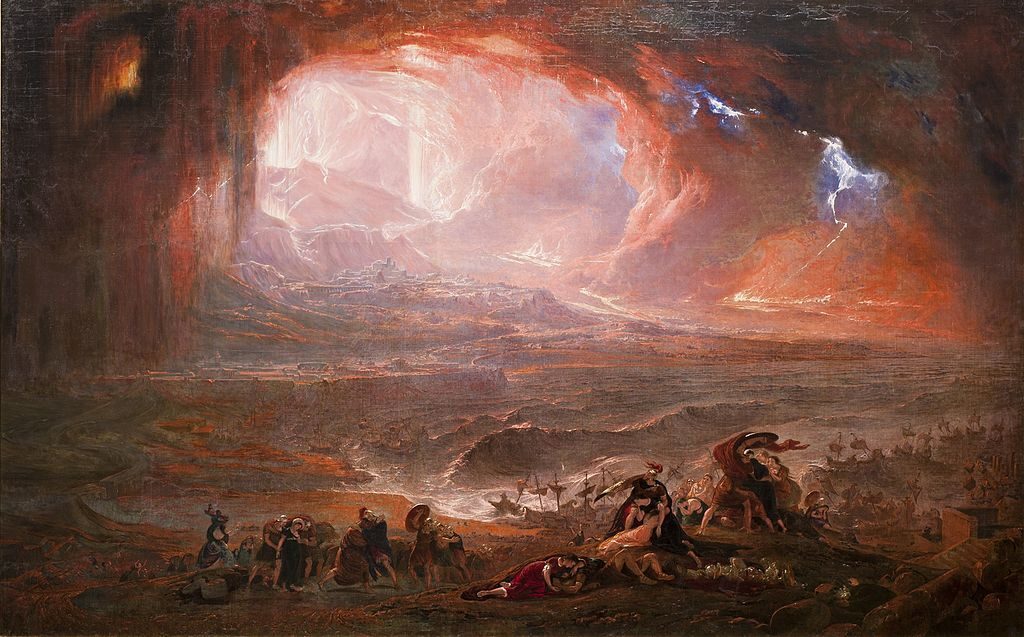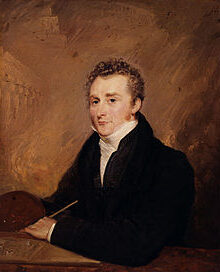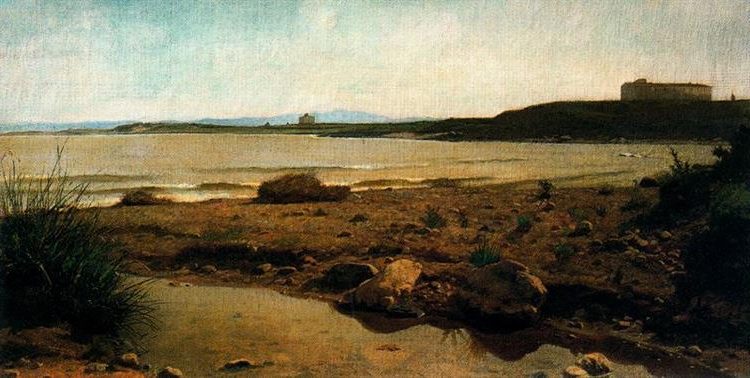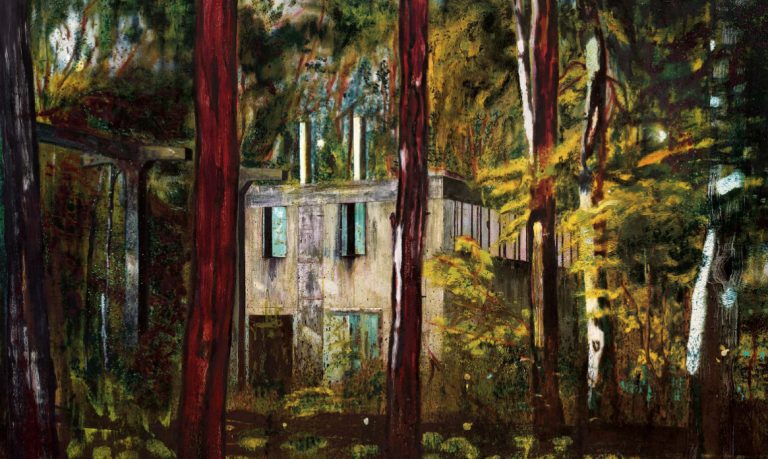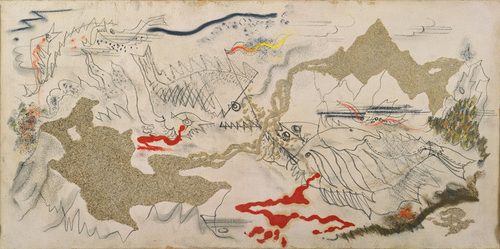John Martin Paintings: An Exploration of His Artistic Legacy
Born: 19 July 1789, Northumberland, England
Death: 17 February 1854, Douglas, Isle of Man
Art Movement: Romanticism
Nationality: British
Influenced By: John Milton
Teacher: Boniface Musso
John Martin Paintings: An Exploration of His Artistic Legacy
Early Life and Artistic Beginnings
John Martin, an influential English Romanticist artist, was known for his captivating large-scale paintings and engravings.
Born in Northumberland, his early experiences shaped his path towards becoming a celebrated artist in oil painting and watercolours.
Origins in Northumberland and Early Career
John Martin was born on July 19, 1789, in a small cottage at Haydon Bridge, Northumberland. His father, Fenwick Martin, was a fencing master. John was the fourth son in a large family.

The Seventh Plague of Egypt (1823) by John Martin
Despite their humble origins, the Martins had a keen appreciation for art. To support his family, John was initially apprenticed to a coachbuilder in Newcastle upon Tyne to learn heraldic painting, a decision driven by practicality as much as passion.
However, his time there was short-lived due to a disagreement over wages. This led to a new apprenticeship with Boniface Musso, an Italian artist, who provided John with drawing lessons.
This change was pivotal, allowing him to refine his skills through lessons in drawing, watercolours, and oil painting.
These formative years laid the groundwork for his future success as an artist.
Development as an Artist
John’s passion for art was evident from a young age. Inspired by the dramatic landscapes and historical themes of romantic art, he quickly excelled in his craft.
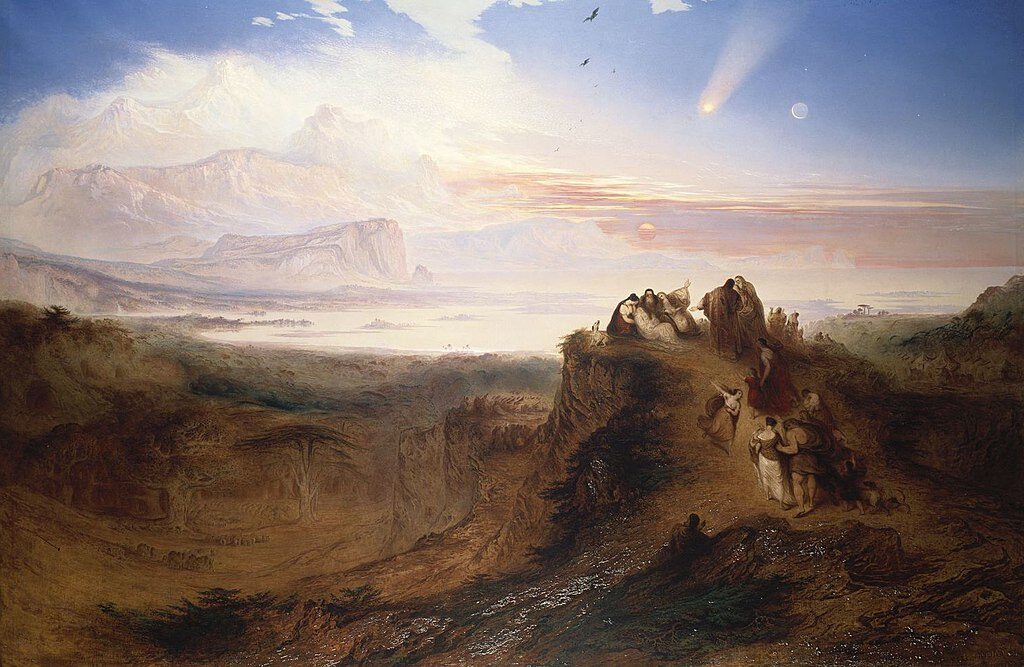
The Eve of the Deluge (1840) by John Martin
He began to experiment with engravings and large-scale compositions that captured the imagination. His early works were characterized by bold contrasts and intricate details in vast sceneries, showcasing his unique vision.
Martin’s development as an artist was also influenced by his exposure to other artists and styles. Through continuous practice and experimentation, he became proficient in various techniques, most notably oil painting.
His work’s epic scope and imaginative compositions would eventually captivate audiences and secure his reputation in the art world.
Prominent Works and Techniques
John Martin is known for his dramatic and vast paintings that often merge religious themes with fantasy elements. His works incorporate complex landscapes and vivid storytelling elements, which have had a lasting impact on art and culture.
Iconic Paintings and Themes
John Martin’s paintings are celebrated for their dramatic flair and intricate details.

The Great Day of His Wrath (1851) by John Martin
Notable works include Sadak in Search of the Waters of Oblivion which showcases a lone figure’s journey through a vast landscape. The Deluge and Sodom and Gomorrah depict catastrophic biblical scenes with intense emotion.
Paintings like The Great Day of His Wrath, The Plains of Heaven, and Belshazzar’s Feast illustrate apocalyptic themes. These works often feature tiny figures against grand, sweeping backdrops, emphasizing the power and scale of natural and divine forces.
Stylistic Elements and Influence
Martin’s artistic style is marked by his use of imposing landscapes and minute figures, creating a sense of grandeur and drama. He often used light and shadow to heighten the emotional impact.
His fantastic compositions and apocalyptic canvasses pushed boundaries and set him apart as a pioneering artist of his time.
His influence extended beyond painting, impacting literature and cinema. The grandiose vision and dramatic tension of his artworks have inspired epic storytelling in various media.
Martin’s approach to scale and dynamic scenes can be seen as a precursor to modern visual effects in films.
Career Highlights and Achievements
John Martin was known for his dramatic paintings and engravings featuring vast, awe-inspiring landscapes. His work garnered both public acclaim and criticism, but he remained a key figure in the Romantic art movement.

Joshua Commanding the Sun to Stand Still (1827) by John Martin
Critical Acclaim and Public Recognition
Martin’s career was marked by widespread public admiration. His remarkable talent earned him critical acclaim and significant recognition.
He exhibited at the Royal Academy and the British Institution, reaching fame with pieces like “The Destruction of Pompeii and Herculaneum”. This painting became so popular that it secured him a prize from the British Institution.
Thomas Lawrence described Martin as “the most popular painter of his day,” highlighting his public appeal. Despite some criticism from figures like John Ruskin, Martin’s work resonated strongly with the general public.
Martin’s large-scale paintings of religious and fantastic themes became symbols of his artistic style. The vivid details and grand compositions captured the imagination of many, leading to a prominent place in art history.
Contributions to Engraving and Illustration
Beyond painting, John Martin excelled as an engraver and illustrator. He created intricate engravings that further solidified his reputation.
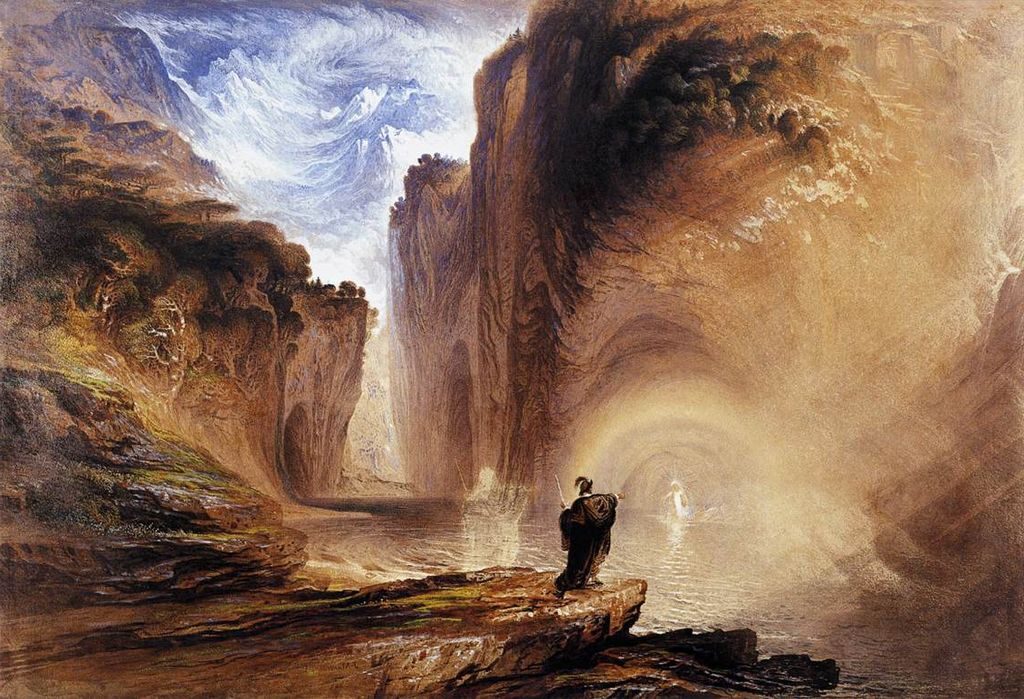
Manfred and the Alpine Witch (1837) by John Martin
His work extended to book illustrations, where he brought literary scenes to life with detailed imagery. Martin’s engravings appeared in various publications, increasing his influence in the art world.
His illustrations were noted for their precision and dramatic flair, complementing his reputation in painting.
Through these contributions, Martin expanded his artistic reach, engaging audiences beyond traditional painting exhibitions. This versatility in different mediums enriched his career and ensured his legacy as a multifaceted artist.
Influence on Culture and Legacy
John Martin’s dramatic paintings have left a significant mark on both the art world and popular culture. His bold depictions of apocalyptic and religious themes, often drawn from the Old Testament, inspired future artists and creators, influencing cinema and literature throughout the years.
Impact on Subsequent Artists and Movements
John Martin’s work was pivotal for many subsequent artists. His use of light and shadow in vast landscapes, often portraying religious subjects like those from the Old Testament, set a new standard for paintings that focus on awe and grandeur.
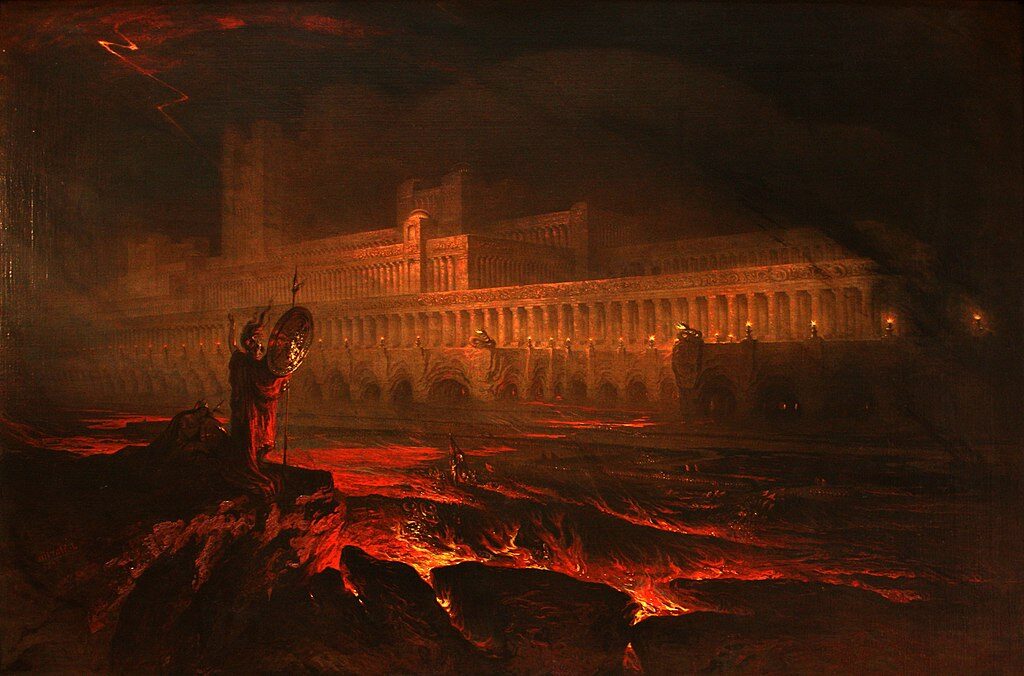
Pandemonium (1841) by John Martin
These thematic elements appear in the works of Romantic artists, as they adopted his approach to epic storytelling through art.
His depiction of destruction and divine themes prompted artists to explore similar narratives. By focusing on bold contrasts and dynamic scenes, Martin influenced movements such as the Pre-Raphaelites, who echoed his meticulous attention to detail and complex compositions.
John Martin in Popular Culture
In popular culture, Martin’s paintings continue to resonate. His artworks inspired writers and filmmakers, notably in their treatment of grand themes like those in Paradise Lost and narratives involving God and human destiny.
The cinematic quality of his work has guided filmmakers in crafting visual epics that capture audiences’ imaginations.
Referred to as “Mad Martin” by some for his bold choices, he also impacted literature and music. His depiction of apocalyptic visions and grand designs influences how modern media portrays themes of destruction and rebirth, leaving an indelible mark on cultural narratives across generations.
Associations and Personal Life
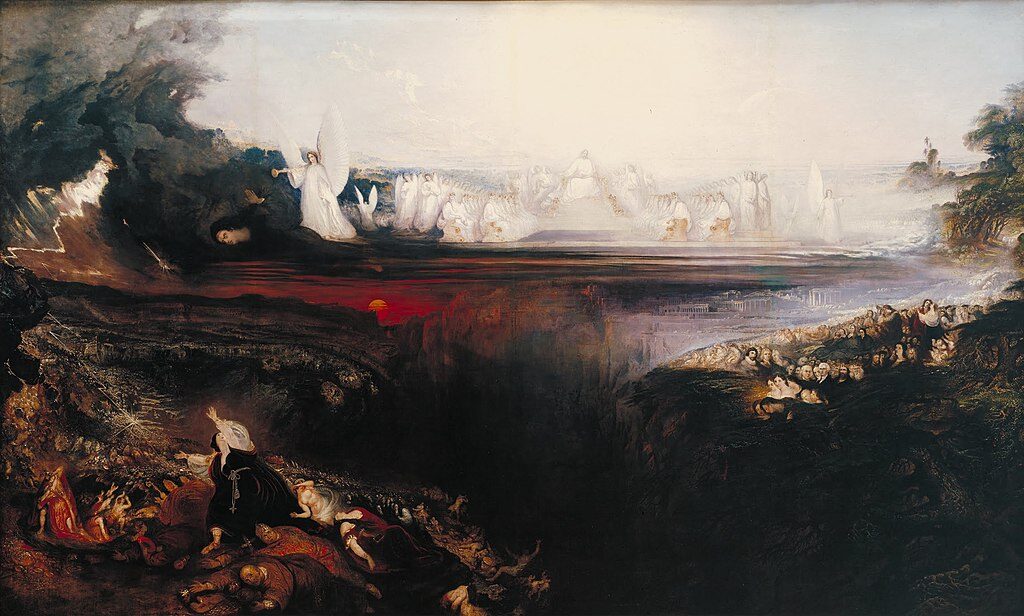
The Last Judgment (1853) by John Martin
John Martin, an influential Romantic painter, engaged with a dynamic range of individuals and cultural circles throughout his life. His connections with fellow artists and thinkers helped shape his career. His personal life saw him balancing art with other interests and addressing local challenges in his later years.
Collaborations and Mentors
John Martin developed a network within the art world, often interacting with various writers, scientists, and artists. These circles provided inspiration and intellectual growth.
He found guidance in figures like painter Boniface Musso, who was instrumental during his early artistic development.
The Romantic movement, with which he was closely associated, thrived on collaboration. Writers and Whig Nobility often showed interest in his work, enhancing his reputation as a popular painter.
Specific collaborations in heraldic and coachbuilder art further showcased his versatility.
Private Life and Final Years
Martin was deeply engaged in activities besides painting. He had a passion for swordplay and chess, reflecting a diverse range of interests.
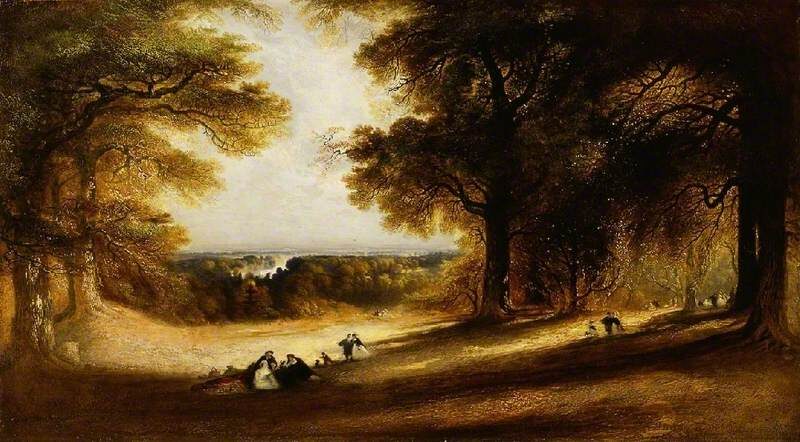
View in Richmond Park (1850) by John Martin
Although he achieved considerable professional success, his personal life also had its share of challenges.
In his later years, Martin moved away from art temporarily to address public engineering concerns, particularly drainage and sewage issues in places like Haydon Bridge, Hexham, and Marylebone. Despite these distractions, he maintained his stature in the art world, balancing societal contributions with his artistic legacy.
Frequently Asked Questions
John Martin was a prominent English Romantic painter known for his dramatic landscapes and religious subjects. His paintings blend imaginative compositions with intricate details, captivating audiences and art critics. Here’s more on specific topics related to his art.
What influences are evident in John Martin’s style of painting?
John Martin’s style shows strong influences from the Romantic era, known for its emphasis on emotion and nature. His work often features dramatic landscapes, extreme weather, and biblical narratives, reflecting the period’s fascination with the sublime and spiritual themes.
Which galleries or museums feature John Martin’s works?
Several prestigious galleries and museums exhibit John Martin’s paintings. The Tate Gallery in London holds a significant collection, showcasing his dramatic art. Major museums worldwide, including the Yale Center for British Art, also feature his works.
How do John Martin’s paintings reflect the Romantic era themes?
John Martin’s paintings embody Romantic themes through their emotional intensity and exploration of nature‘s power. His use of vast, stormy landscapes and apocalyptic scenes speaks to the Romantic ideal of the sublime—awe-inspiring and powerful beyond human control.
What are the notable characteristics of John Martin’s painting technique?
Martin’s painting technique is characterized by meticulous attention to detail and dramatic contrasts between light and dark. His use of small figures against massive, theatrical backdrops enhances the sense of scale in his compositions, creating a profound visual impact.
How have John Martin’s paintings been received by art critics historically?
Historically, art critics have had varied opinions on Martin’s work. While some admired his creativity and the grandeur of his scenes, others critiqued his technical skills. Despite mixed reviews, his art has remained influential and continues to be studied for its impact on later generations.
What is the significance of John Martin’s painting ‘The Great Day of His Wrath’ in art history?
‘The Great Day of His Wrath’ is one of John Martin’s most famous works. It depicts an apocalyptic vision. Its dramatic portrayal of destruction and divine judgment stands as a powerful representation of Romantic-era themes. This painting has been influential in shaping visual culture and inspiring future artists.

